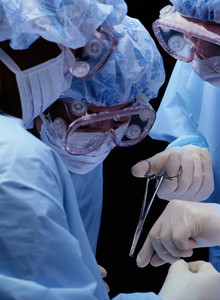There are no compelling pharmacological arguments against the sensible use of the generic immunosuppressants ciclosporin, tacrolimus and mycophenolate mofetil in clinical practice, argue pharmacologists working in drug evaluation in The Netherlands [1].
Equivalence of generic immunosuppressants
Generics/Research
|
Posted 31/05/2013
 0
Post your comment
0
Post your comment

Registration of generic medicines in The Netherlands will only take place if the Dutch Medicines Evaluation Board (College ter Beoordeling van Geneesmiddelen, MEB) is convinced that the generic has the same efficacy and safety profile as the innovator medicine. Maliepaard et al. explain why the MEB considers this is also the case for immunosuppressants, based on the quality of the medicine and bioequivalence testing.
If the manufacturer of a generic drug demonstrates that the drug’s exposure in time – which, for products with immediate release characteristics, is determined by area under the curve (AUC) and the maximum concentration (Cmax) is equal to that of the branded medicine, the two products are bioequivalent. Once bioequivalence is demonstrated, generic drug manufacturers can refer to the clinical studies performed with the branded drug for the efficacy and safety of the generic drug, with no need for additional clinical trials prior to registration.
In the case of generic immunosuppressants, the acceptance range is narrowed in order to further reduce the chances of obtaining clinically relevant differences in exposure when switching to and from generic medicines. The option to narrow the acceptance range is given in the current (2010) and previous (2001) ‘Guideline on the Investigation of Bioequivalence’, for medicines with a narrow therapeutic index (NTI).
Although the strict requirements for demonstrating bioequivalence are equally valid for branded and generic drug products in general, doubts remain over generic immunosuppressants. This is understandable, given the impact of immunosuppressant failure following transplantation, but Maliepaard et al. point out several incorrect assumptions behind recurring arguments against generic immunosuppressants.
For example, one argument against generic ciclosporin is that although it might have the same AUC and Cmax as the branded drug, certain critical points of the plasma concentration–time curves might differ. Ciclosporin plasma concentrations two hours after administration (C2) or trough levels (Ctrough) are used to monitor and adjust ciclosporin exposure and dose. However, for ciclosporin, the pharmacokinetic after the initial absorption from the gastrointestinal tract is governed by the molecular active substance only. Since this substance is identical for the branded and generic ciclosporin formulations, differences in C2 or Ctrough, despite demonstrated bioequivalence, will be extremely unlikely, note the authors.
Other factors, however, may play a role in the outcome of generics substitution. For example, differences in shape and colour of generics might lead to distrust, mistakes or reduced compliance among patients. The consequences of such differences may even increase when the branded and generic drug are frequently switched, which is a realistic scenario in The Netherlands, where the frequency of switching is increasing due to the current pricing and reimbursement policy of the Dutch health insurance companies. Frequent switching to other generics might negatively affect compliance and confidence, could potentially increase the chance of errors, and should be avoided where possible.
It is the joint responsibility of the pharmacist and prescriber to monitor this switching and to provide satisfactory communication for the benefit of the patient when generic drugs are substituted. In the opinion of Maliepaard et al. inadequate communication between pharmacist and prescriber cannot be used as an argument against the use of generics, but should better lead to incentives to solve this issue.
GaBI Journal is producing an educational editorial series on 'Generic Immunosuppressants in Transplantation', with Professor Teun van Gelder as the Guest Editor, click here for the details and contact us for more information on this educational supplement.
Related articles
FDA grant to study generic versus brand-name transplant drugs
Novartis introduces branded generic tacrolimus
Bioequivalence of generic cyclosporine
Reference
1. Maliepaard M, Leufkens HGM, Y Yang. Equivalence of generic medicines in general and immunosuppressants in particular – a regulatory opinion on switching of cyclosporin, tacrolimus and mycophenolate mofetil. Generics and Biosimilars Initiative Journal (GaBI Journal). 2013;2(2):86-90. doi:10.5639/gabij.2013.0202.019
Permission granted to reproduce for personal and non-commercial use only. All other reproduction, copy or reprinting of all or part of any ‘Content’ found on this website is strictly prohibited without the prior consent of the publisher. Contact the publisher to obtain permission before redistributing.
Copyright – Unless otherwise stated all contents of this website are © 2013 Pro Pharma Communications International. All Rights Reserved.
Most viewed articles
The best selling biotechnology drugs of 2008: the next biosimilars targets
Global biosimilars guideline development – EGA’s perspective
Related content
Japan’s drug shortage crisis: challenges and policy solutions
Saudi FDA drug approvals and GMP inspections: trend analysis
Generic medications in the Lebanese community: understanding and public perception
Community pharmacists’ understanding of generic and biosimilar drugs: Lebanon case study
Generic medications in the Lebanese community: understanding and public perception

Generics/Research Posted 23/01/2024
Community pharmacists’ understanding of generic and biosimilar drugs: Lebanon case study

Generics/Research Posted 08/09/2023
The best selling biotechnology drugs of 2008: the next biosimilars targets








Post your comment